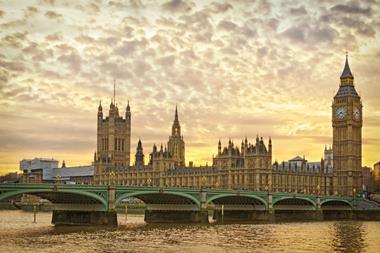Many of the lowest-paid members of UK defined contribution (DC) master trusts are missing out on 20% pension tax relief, consultancy Hymans Robertson has warned.
The firm’s research has revealed that just three of the top 17 master trust providers offered the chance for members caught between the £10,000 (€11,533) annual minimum level for auto-enrolment and the £11,850 income tax threshold to claw back their tax.
Tax relief ‘at source’ was offered only by NEST, Legal & General and The People’s Pension, Hymans Robertson said. NOW:Pensions did not offer tax relief at source, but “does make up any shortfall in lost tax relief for members”, it noted.
The anomaly first became apparent in April 2015 when the government retained the minimum salary level for auto-enrolment at £10,000, but raised the liability rate for income tax to £11,500.
“Master trusts have grown to represent over 35% of the workplace savings market and account for the savings of over 7m DC scheme members in the UK,” said Jesal Mistry, head of scheme design and provider evaluation at Hymans Robertson.
“The fact that only three of the master trusts we surveyed offered tax relief at source is not just surprising but a major concern as it could mean thousands of individuals auto-enrolled are not receiving the tax relief they were promised.”
Pension freedoms three years on
Figures from FTSE 100-listed broker Hargreaves Lansdown have revealed the extent to which recent retirees have fallen out of love with annuities since pension freedoms were introduced three years ago.
In April 2015, more than 90% of retirees opted for an annuity, the company said. That number had fallen to just 12% at the start of this month, with 54% now choosing to cash in their entire pension fund.
Nathan Long, senior pension analyst at Hargreaves Lansdown, said that while the relaxation of the rules had allowed investors more flexibility, the stability and security of an annuity could not be ruled out.
“New pension rules have put savers firmly in control of their life after work and have proven incredibly popular,” he said. “Now, three years on from the pension freedoms, stable annuity rates and a rising stock market could prompt the first round of pension freedom-seekers to re-examine opting for the security of an annuity with some or all of their pension plan.”
The annuities market has shrunk to just six providers, with eight having exited following the launch of pensions freedoms on 6 April 2015. However, Hargreaves Lansdown estimated that the departing companies represented just 15% of the overall market.
Teachers’ Pension Scheme to equalise survivor benefits
Same-sex couples within the Teachers’ Pension Scheme will soon be granted the same survivor rights as their heterosexual peers following a ruling in the Supreme Court last year.
Regulatory changes will be introduced to standardise the treatment of same- and opposite-sex couples after the court ruled in favour of John Walker in his 12-year battle with Innospec, the global speciality chemicals company.
Walker had requested that his company pension pass to his husband in the event of his death, but because he had joined the firm before 5 December 2005, when civil partnerships were introduced in the UK, Innospec declined the request.
In an update on the Teachers’ Pension scheme website, members were informed that survivors of civil partnership or same-sex marriages would gain the same benefits if they were employed from 1 April 1972 or 6 April 1978 if the marriage occurred after the last day of pensionable service.
However, anomalies remain within the scheme with regard to male widowers of female teachers. On its website, the scheme said a European Court of Justice ruling meant schemes must “provide equal survivor benefits for males who survive their female spouse in relation to service from May 1990. The Teachers’ Pension Scheme provides survivor benefits for males who survive their female spouse in relation to service from 6 April 1988.”
DB deficit jumps during March
The combined deficit of the UK’s defined benefit (DB) pension schemes jumped by more than 60% over the past month, according to figures from the Pension Protection Fund (PPF).
The total shortfall increased from £72.1bn at the end of February to £115.6bn by 31 March, the statutory body’s monthly figures showed.
Funding levels also fell over the month, with the ratio dropping to 93.1% at the end of March. Total assets stood at £1.57trn with liabilities recorded at £1.7trn. Just under 3,800 schemes remained in deficit, with 1,792 in surplus, the PPF noted.
However, the PPF said the deficit was still lower than the £161.8bn shortfall recorded at the end of March last year. Funding levels, on a year-by-year basis, also improved – up from 90.5% in March 2017.











No comments yet